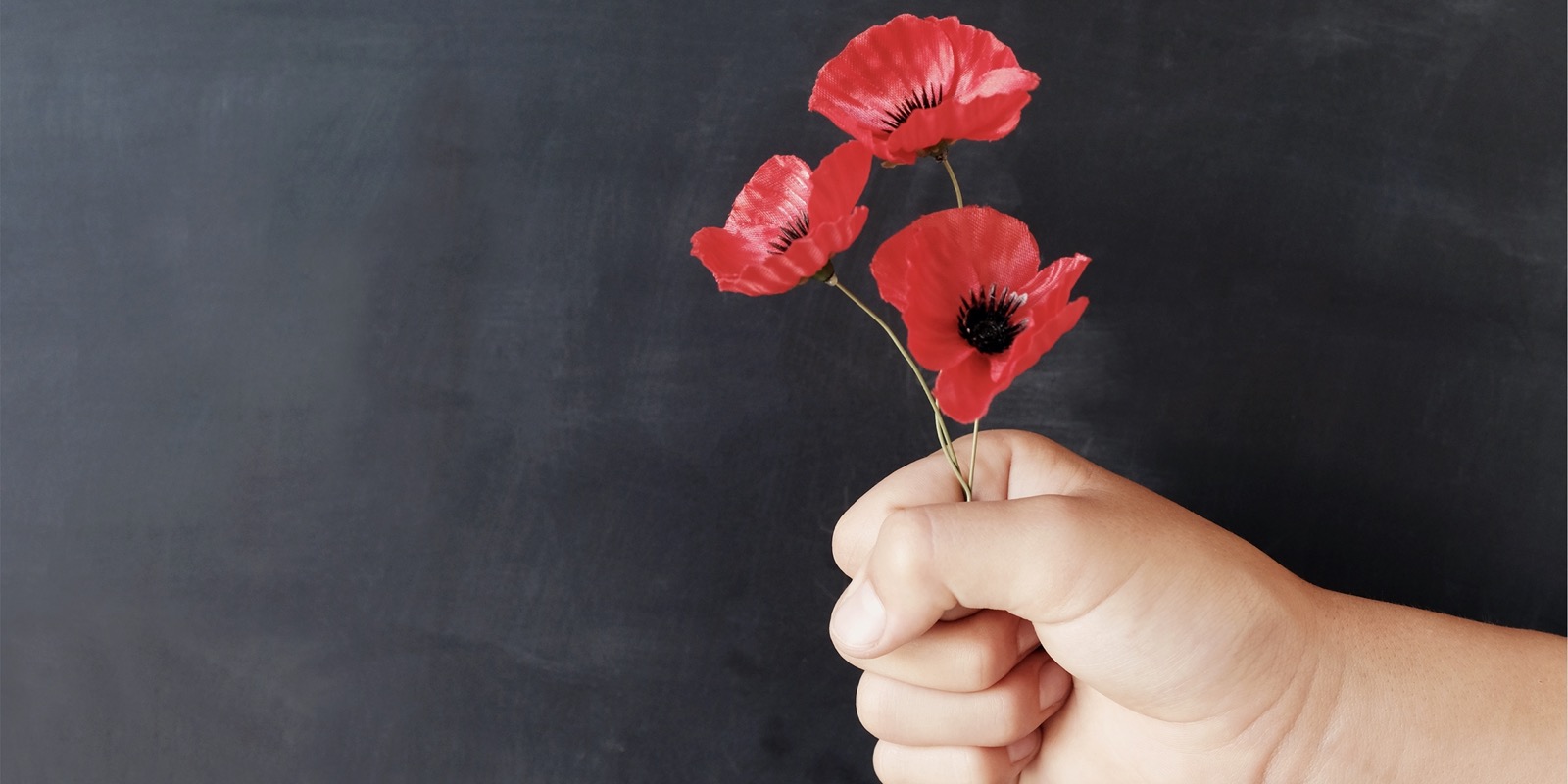While most of us have been staying inside for several weeks, many leave the safety of their homes every day to help us live our lives as normally as possible.
The people who must continue to do their jobs even in times of crisis have been a blessing to others and a small but significant source of good news during these days of isolation. I looked for some of these people to whom we owe the oasis of normalcy we enjoy, to see what their work day looks like, what challenges they face, and what worries them. Their stories are different but still have a lot in common with each other: they show hope, fear, and courage melting together into a unique message.
Most of the people I spoke to were open, even eager, to talk about what they were doing, although most wanted some anonymity, and asked for only their initial to be published. I respected their wishes, because it is their story that matters, and, in many cases, their experience echoes many others’ whose stories are yet to be told.
“The time when we are needed”
“It could be me in their place,” says ‘V’, a 56-year-old nurse who works in the pulmonology department of a city hospital. Accustomed to treating patients with asthma, bronchitis, emphysema, or other lung conditions, V, like all medical staff, had to learn how to care for patients who were potentially infected by COVID-19, and at the same time minimise the risk of infection.
Without looking at the situation through rose-tinted glasses—or, the hospital’s fluorescent lights—V still feels relatively protected. The epidemiological protocols are respected, and the wards of patients suspected of being infected with COVID-19 are not entered without the recommended equipment—a filtration mask, goggles, a visor, two surgical gowns over the usual one, hospital gowns, boots, and two rows of gloves.
So far, the hospital has had only one patient diagnosed with COVID, right in the ward where V works. He had had a persistent fever even after days of treatment, so the emergency services decided to send him there. He was 49 years old, and burning with worry and thirst. V brought him water, moved by the shyness with which he asked for it, and encouraged him as best she could.
V has the gift of always seeing the glass as half full, and told me that whenever she thinks about the risks of her profession, she remembers the nurse who was saved from the Titanic as it sank. I told her that I was not familiar with the story, and she laughed, unsure if her memory cut the story of the nurse from the film Titanic. The point is, she tends to remember the brightest parts of the darkest stories.
The news that the patient they were treating had tested positive for COVID-19 did not affect her much. And this is not because she is immune to the fear that is floating in the air these days. In the first days of the epidemic, she came to the hospital with a feeling of dread. They faced the unknown: staff were confused, and rules changed from one hour to the next. Life was presenting new challenges, and it took some time to get comfortable with the new reality.
She knows that patients need her, and focusing on their needs is how she escapes the landscape of her daily fears. This does not mean that she is ignoring the risks. She has only seen her children and grandson on the phone screen for some time and has had a conversation with her husband about what the other one should do if something happens to one of them.
“We must not be paralysed by fear. We’re needed now, so now is the time to prove that we do our job with love,” V has concluded, convinced that seeing your own image reflected in others is the only way to prioritise the well-being of others in a world of potentially deadly consequences.
Thoughts from isolation
‘A’ is 46 years old, and has been a nurse for 26 years. She works in the cardiology department of a hospital in a provincial town. In fact, she is preparing to return to the hospital after 14 difficult days of isolation.
The morning she took over patients from a colleague who had worked the night shift, she didn’t know that it would be her last day of work for a while. An elderly patient had a fever in the morning, so she checked in with her in the first hour of her shift. The fever persisted, so she informed the doctor. The x-ray raised the possibility of a COVID-19 infection, which the test later confirmed. The patient died while being transferred to a hospital in another city, one day after the diagnosis.
None of her contacts tested positive for COVID-19, but A went into isolation as protocol demands. For two weeks she was barricaded in the house and only talked to her family on the phone.
Isolation can be a torturous experience. You are far from your loved ones, with thousands of questions flowing through your mind, with every thought grinding at the mill of the same fear, and with all your senses on alert, on the lookout for any unusual physical or mental change you detect in yourself.
“God helped me,” A says, having arrived safely at the end of 14 days of solitary confinement. She will soon return to work and adjust her expectations and habits to a reality that unfolds on new terms. People in scrubs are also tense at the thought of infection, especially when they have a family waiting for them at home. They grope around for a sense of togetherness—one that must be experienced from a safe distance.
However, she says her place is at the hospital, even though she admits that she and her husband discussed the idea of taking a vacation soon. This was a comfortable scenario, which she eventually rejected. To her, fleeing would be an act of cowardice, an injustice to colleagues who come to work every day, A explains, rushing to add that resignation is not a solution to get out of this crisis.
Like so many other devoted medical workers, A sees each patient as more than a diagnosis, and more than a stricken and time-worn body. In every hospital bed she visits, there is a person with a life behind them, and the hope of one ahead of them, and people waiting for them at home with the same hope and apprehension all of us feel.
When mothers are kept away from home
‘C’ is 40 years old and works as a nurse in a palliative care department. She has not yet completed a year since she was hired at this hospital, following a competition which, she tells me, she rightfully won.
She also knows what it’s like to be related to a patient who ends up in palliative care. Years ago, she admitted a parent to a palliative care centre and was left with the impression that these patients were treated as if they were only half alive. In the ward where she now works, people are treated differently. Patients’ medical problems are carefully managed, as if they have years to live, which often happens. And she knows the therapeutic value of kind words, so she never uses them sparingly.
However, she already talks in the past tense about her usual work, because her hospital transferred the patients from her department either to other care centres or home to their families. Families often do not want to take over the patient’s needs again once they have passed them on to the hospital. C has had many long and exhausting telephone conversations, and at the end of them she is left to sadly conclude that neither before the epidemic nor in in its midst do we know how to treat the most fragile among us with dignity, even when they are our own flesh and blood.
“Who will take care of us at home?” one of the old ladies wept as she left the centre, and C could only assure her that she would be received back with open arms soon, when the pandemic is over. This word ‘soon’ breaks her heart because of how imprecise it is. She is not only a nurse, but a mother, too. Over the weekend, one of the hospital’s patients was diagnosed with COVID-19, and the medical staff had to choose: either go home, as usual, at the end of the shift, or isolate themselves at the hospital so as not to infect their vulnerable family members. Her mind knew the answer from the first moment the question was asked, but being separated from her family has not been at all easy.
“It’s hard for me. The little one doesn’t fall asleep in the evening until I hold her hand,” says C., and here her voice breaks, while she imagines the emptiness of who knows how many nights in which those little hands will search in vain for their mother’s hand.
However, she still hopes that everything will be fine in the end. She believes that all things have a purpose, and that the place she is in now is exactly where she needs to be.
For those who are not forced to leave their homes, she offers the same advice that I have heard many times, but which always carries more weight when it comes from those who are most at risk: take care of those at risk, strictly follow hygiene rules and social distancing, and do not underestimate an enemy “from whom you can expect anything”. It is for their good and it is for everyone’s wellbeing, C insists. I imagine that, among the innumerable number of those we can protect by protecting ourselves, she is thinking of her child who has only just learned to count, but not so well as to count the many days and nights when her mother will be only a voice on the phone.
“People avoid me like the plague”
‘M’ is 56 years old and works as a pharmacist in a small town with inhabitants in the tens of thousands. Panic over COVID-19 took the pharmacy by storm, and quickly depleted its drug stocks as soon as the first rumours of the pandemic were out. Then came quarantine, and sales dropped to a minimum. However, masks, gloves, disinfectants and medicines such as paracetamol remain in high demand.
People respect social distancing when inside the pharmacy, and this is something that M hopes they will not forget soon. They are certainly more quiet. Some even seem scared, while others take things easy, but most rarely take as much time to talk to pharmacists as they used to. One sympathises with pharmacists, because they have to work with the public.
M does not necessarily feel protected by the mask, gloves, or screen that separates her from the customers. However, she is not afraid of COVID-19, like she does not fear any other virus. She tells me that during the first days of the pandemic, when her work colleagues were scared, she used to lift their spirits, even though they are decades younger than her.
If she is asked to deliver medication to someone who cannot walk, she does so with great pleasure. She has already done it repeatedly for acquaintances or friends. But she tells me that it leaves her with a bittersweet feeling because, when she makes a delivery, people treat her as if she has the plague. This is not just about keeping safety rules, but about something deeper, a distortion, in this world of fear, of the closest relationships, and M is afraid that this will be one of the legacies the novel coronavirus will leave with us even after the virus is only a memory.
“No matter how much I protect myself, the risk remains”
Joan is 31 years old and is a cashier in a hypermarket. Between her and the customers who could be carriers of coronavirus, there is only a cotton mask, a pair of thin gloves, and a transparent plastic screen that not all customers seem to see the need for.
In the beginning of the pandemic the store restricted the number of people who were allowed to enter. But the rule has disappeared as quickly as it was established, and customers no longer notice the ever-smaller distance between them, neither when they wander between the store shelves, nor when they wait for their products to be scanned. Some do not have a mask, others do not wear gloves, and still others use neither. It is not uncommon for someone to sneeze in the store, showing no awareness of how to do it without contaminating the products or the people around them.
It’s a strange mix of panic and indifference, says Joan. Customers have gotten used to the idea of the epidemic, and the sellers have too.
Joan no longer thinks all that much about the risk of becoming infected, although she comes into contact with a lot of people every day. While she is less stressed, she is more rigorous with the hygiene rules. Still, when she returns home, she tries to leave all her worries at the entrance to her house. Waiting inside are her husband, whose job gives him just as much exposure to the virus, and her little boy.
Meanwhile, Joan’s job remains one of the pillars of the stable and secure life she was used to. It is a job she never gets bored doing, and while she scans the products or arranges the shelves she tries not to think about the microscopic enemy that could be anywhere: “If it happens, it happens, and if not, glory to Heaven!”
Spring and the pandemic, on dusty roads in the country
Eddie is 29 years old and a local police officer. He patrols, with a partner from the national police force, five days a week through a town with over 2,500 inhabitants.
It is his responsibility to check that people are isolating at home after returning from abroad. There are only around 12 people he still needs to check, as the rest have already come out of isolation. He tells me there are no problems, because people are usually at home during the hours they are under curfew. But what they do the rest of the time is another story, one that is well known to several neighbours who call to report unsanctioned walks by those who feel suffocated between the otherwise generous borders of their own households.
When needed, Eddie also delivers packages with items of great necessity to those isolated, or who are unable to do their own shopping.
There is no case of coronavirus in the town yet, and, as long as the epidemic is more of a news item that simply captures the evening newspaper headlines and the debates in faraway television studios, the villagers are unhindered in their affairs.
Some ridicule the pandemic, convinced that they will not actually see a single COVID-19 case. Others have relatives in countries affected by the new coronavirus, and take things more seriously.
Even if the area he supervises is quiet, Eddie would like to return to a time when he didn’t feel stressed in the morning as he left for work. Until then, he advises the villagers to limit their outings and their contact with others.
‘P’ is 50 years old, and works as a postal agent, distributing mail, pensions and allowances to the inhabitants of a mountain village. Working as a postwoman has never been easy, but it was never as difficult as it is during the pandemic, says P. One of her colleagues, fearful of the possibility of infection, announced that she was thinking of taking medical leave and only the pressure of her colleagues made her change her mind—at least for now. Everyone has more than enough ground to cover, so the absence of one can derail everyone’s schedule. The absence of several of them is simply unimaginable under the current conditions.
In P’s post office, one of the postal agents was a contact of a person confirmed to have COVID-19. Therefore, he was isolated, as were three other colleagues. However, they were urgently called to work after a week of isolation, because there was no one to distribute pensions in the area, says P.
The thought of being infected with COVID scares her, not because she thinks of herself, but because she believes her grandchildren are too young to face such a treacherous enemy. The low spirits of the people she meets does not help her much either. They barely respond to greetings and treat her coldly, with a kind of fear in their eyes, which makes her feel like she’s been found sick.
What is most depressing to her is that in the early days of quarantine the village had sunk into a grave-like silence. She did not meet anyone in the streets, there were no children’s voices behind the high gates, and the courtyards of the houses seemed deserted. It was a depressing sensation to glide through the deserted streets and alleys, as if plunged into a dystopian city from which all but one of the inhabitants have disappeared one morning.
Anxiety still envelops the settlement, but the silence of the first days is only a memory now. The village is rustling with life again. And, wherever there is life, there is hope.
Carmen Lăiu is a writer for ST Network and Semnele timpului.



















